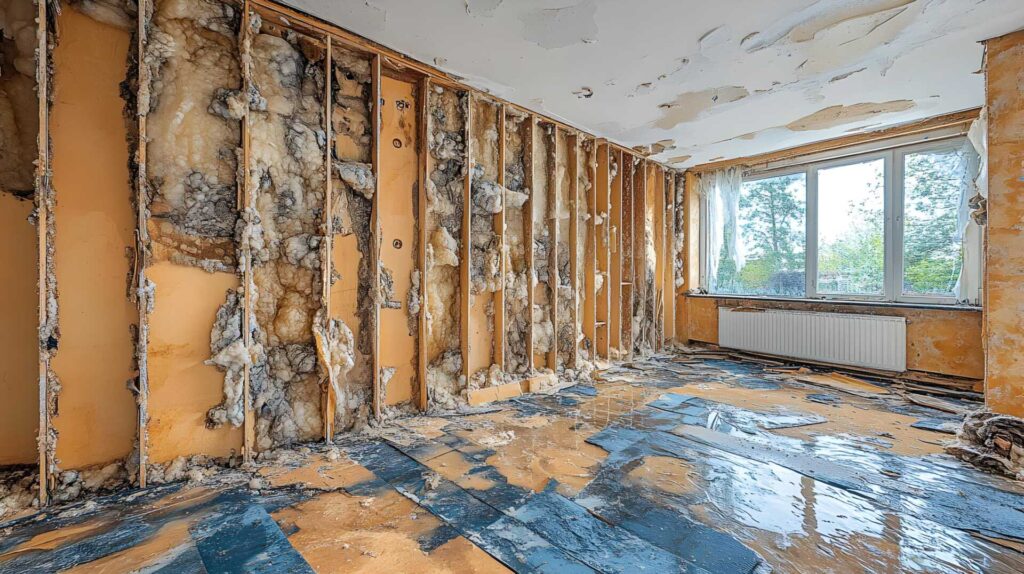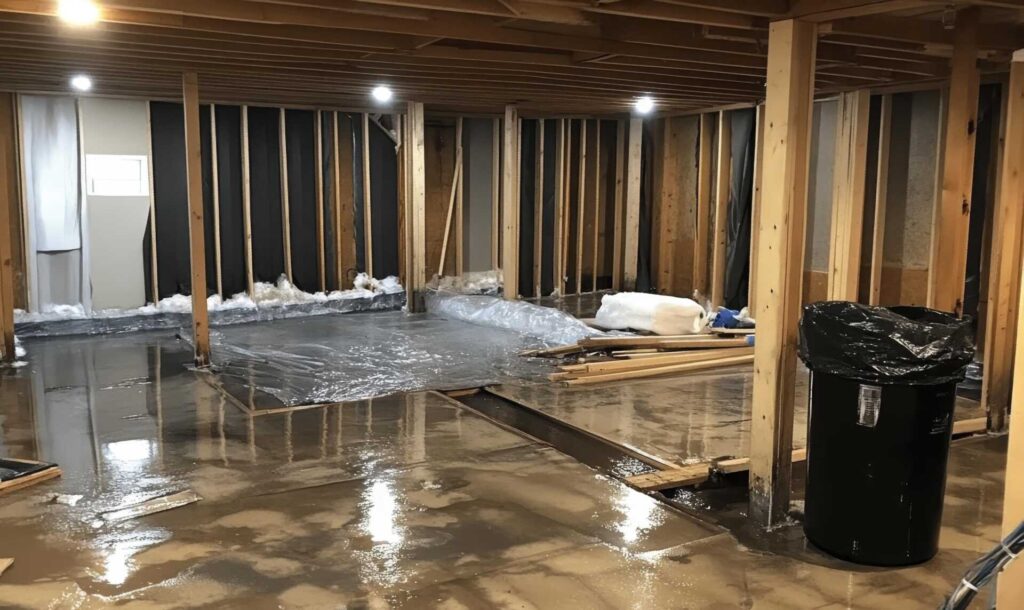Contents
Are you ready to tackle the plumbing in your building?
Before you dive into the world of pipes and fixtures, it’s important to know what should be installed first. In this article, we’ll guide you through the necessary steps, ensuring that you have a solid foundation for your plumbing system.
From water supply lines to drainage and ventilation systems, we’ll cover it all.
So, grab your tools and let’s get started on this plumbing adventure together!
Key Takeaways
- Water supply lines should be installed before anything else in a building plumbing system.
- Proper pipe size and material should be determined based on water demand.
- Fixture location and distance from the main water source should be considered when planning the layout of water supply lines.
- Water supply lines should be connected to the main water source and routed to different areas of the building.
Water Supply Lines
When plumbing a building, you should begin by installing the water supply lines before anything else. This step is crucial because it ensures that clean and safe water is readily available for the residents or occupants of the building. By prioritizing the installation of the water supply lines, you’re setting the foundation for a functioning plumbing system that meets the needs of those you’re serving.
To install the water supply lines, you’ll need to determine the appropriate pipe size and material based on the water demand of the building. Copper or PEX pipes are commonly used due to their durability and resistance to corrosion. These materials are also easy to work with, making the installation process more efficient.
Next, you’ll need to plan the layout of the water supply lines, considering factors such as the location of fixtures and the distance from the main water source. It’s important to ensure that the water supply lines are properly sized and have sufficient pressure to meet the demand of the building.
Once the layout is determined, you can begin installing the water supply lines by connecting them to the main water source and routing them to the different areas of the building. This process involves cutting and joining pipes, as well as installing valves and fittings to control the flow of water.
After the installation is complete, it’s essential to test the water supply lines for any leaks or issues. This ensures that the plumbing system is functioning properly and provides a reliable water supply to the building.
Drainage System
To ensure proper plumbing functionality, the next step after installing the water supply lines is to establish the drainage system in the building. A well-designed and properly installed drainage system is crucial for the efficient removal of wastewater and sewage from the building.
Here are a few key points to keep in mind when installing the drainage system:
- Design and layout: Careful planning is essential to ensure that the drainage system effectively removes wastewater from all fixtures in the building. Consider factors such as the number of fixtures, their location, and the slope of the pipes to ensure proper drainage.
- Fixture placement: Strategically placing fixtures such as toilets, sinks, and showers will help optimize the drainage system’s performance. Ensure that fixtures are placed in areas where wastewater can flow easily towards the main drain.
- Pipe sizing: Properly sized pipes are crucial for efficient drainage. Consult local building codes and guidelines to determine the appropriate pipe diameter for each fixture and the main drain.
- Ventilation: Adequate ventilation is essential for the proper functioning of the drainage system. Vent pipes allow air to enter the system, preventing the formation of vacuum and ensuring smooth wastewater flow.
- Vent pipe placement: Place vent pipes vertically and as close to fixtures as possible. This allows for efficient air circulation and prevents the build-up of gases and foul odors.
- Vent pipe sizing: The diameter of the vent pipes should be determined based on the number of fixtures they serve. Consult local regulations to ensure compliance.
Ventilation System
After establishing the drainage system, it’s important to focus on the installation of the ventilation system in your building. Proper ventilation is crucial for maintaining a healthy and comfortable indoor environment. It helps to remove stale air, control humidity levels, and prevent the buildup of harmful pollutants.
When it comes to installing a ventilation system, there are a few key components to consider. The first is the ductwork, which carries the fresh air into the building and removes the stale air. It’s important to ensure that the ductwork is properly sized and installed to ensure efficient airflow.
Next, you’ll need to install ventilation fans. These fans help to circulate the air and remove any odors or pollutants. They should be strategically placed in areas such as bathrooms, kitchens, and laundry rooms to effectively remove moisture and prevent the growth of mold and mildew.
In addition to ductwork and fans, you may also want to consider installing air filters. These filters help to remove dust, pollen, and other allergens from the air, improving indoor air quality and reducing the risk of respiratory problems.
Lastly, it’s important to ensure that your ventilation system is properly maintained. Regular cleaning and inspection of the ductwork, fans, and filters will help to prevent any issues and ensure that the system is functioning effectively.
Fixtures and Appliances
Now it’s time for you to focus on installing fixtures and appliances in your building’s plumbing system. These are the essential components that will make your plumbing system functional and efficient. Here are some important points to consider:
- Fixtures:
- Choose fixtures that suit the needs and preferences of your building’s occupants. This includes sinks, toilets, showers, and bathtubs.
- Ensure proper installation of fixtures to prevent leaks and water wastage.
- Install fixtures in convenient locations, considering accessibility and user comfort.
- Test fixtures for proper functioning and make any necessary adjustments.
- Appliances:
- Install water-using appliances such as dishwashers and washing machines, connecting them to the plumbing system.
- Ensure proper connections and secure fittings to prevent leaks and water damage.
- Follow manufacturer’s instructions for installation and maintenance of appliances.
- Test appliances for proper functioning and make any necessary adjustments.
Remember, the goal is to provide a reliable and efficient plumbing system that meets the needs of the building’s occupants. By installing fixtures and appliances properly, you can ensure a smooth and hassle-free experience for your customers or residents.
As you proceed with the installation, always prioritize safety and compliance with building codes and regulations. Seek professional assistance if needed, especially for complex installations or if you’re unsure about any aspect of the process.
Water Heater
When installing a water heater in your building’s plumbing system, ensure proper placement and connection for efficient and reliable hot water supply. The water heater plays a crucial role in providing hot water for various purposes such as bathing, cooking, and cleaning. To ensure its effective functioning, it’s important to follow a few essential steps.
Firstly, choose an appropriate location for your water heater. It should be installed in an area that allows easy access for maintenance and repairs. Additionally, consider placing it near the areas where hot water is required the most, such as the kitchen or bathroom. This will minimize heat loss and provide hot water more quickly, thus enhancing efficiency.
Next, ensure a proper connection to the water supply and the rest of the plumbing system. It’s crucial to use high-quality materials and fittings to prevent leaks and ensure a steady flow of hot water. Hiring a professional plumber can help ensure that the water heater is correctly connected to the pipes and meets all safety standards.
Furthermore, consider the size and capacity of the water heater. Choose a model that can accommodate the hot water demands of your building. Oversized or undersized water heaters can lead to inefficiency and unnecessary energy consumption. Consulting with a plumber can help you determine the appropriate size based on the number of occupants and their hot water usage patterns.
Conclusion
In conclusion, when plumbing a building, it’s crucial to follow the correct installation sequence.
Starting with water supply lines ensures a steady flow of clean water, followed by the installation of the drainage system to effectively remove wastewater.
The ventilation system helps maintain air quality within the building.
Finally, fixtures and appliances are installed, along with the water heater for comfort and convenience.
Following this order ensures a well-functioning plumbing system for the building.
You may also like: What are the two different rough ins completed when plumbing a new home?




